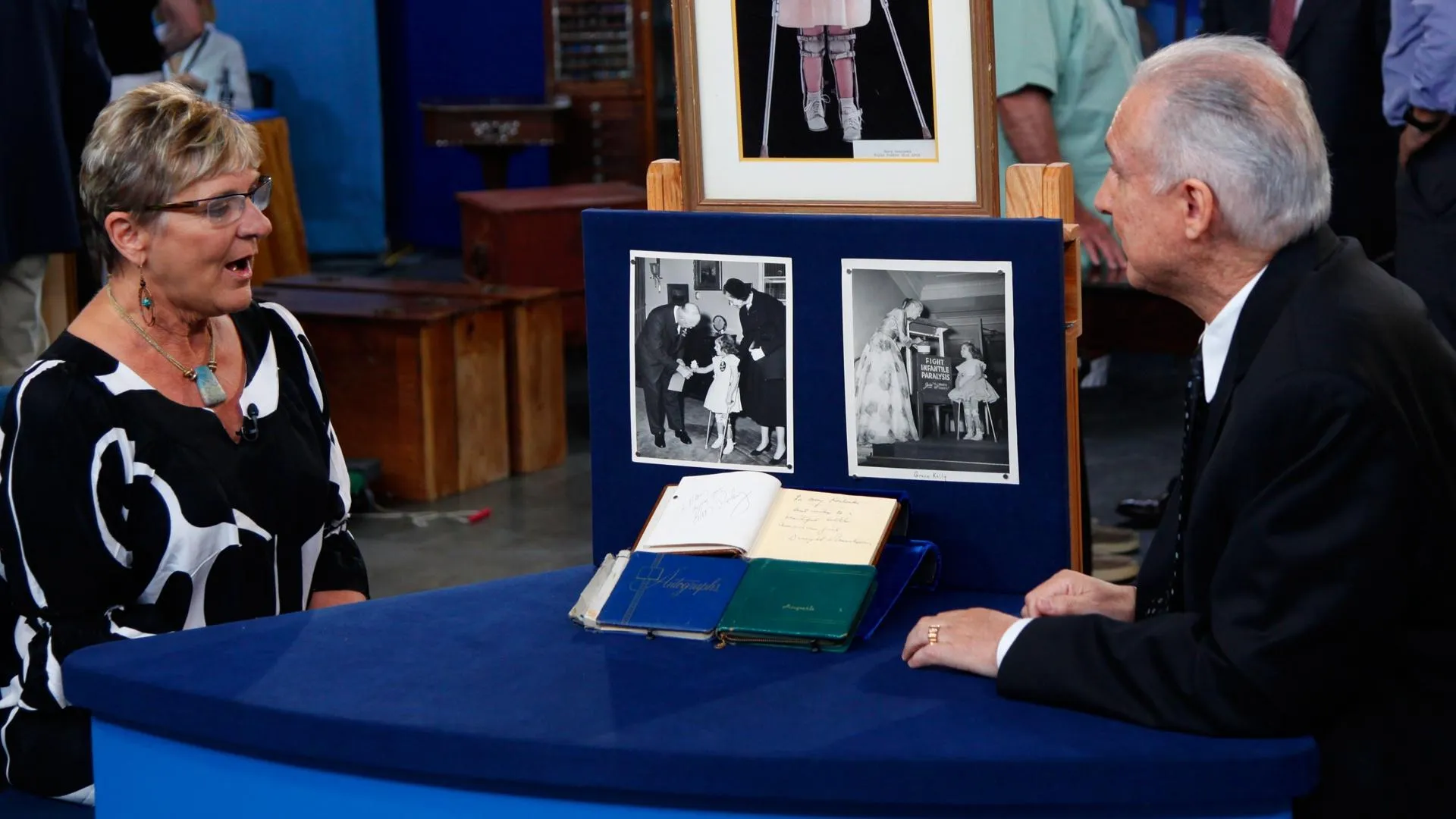GUEST: It's a tall case clock. We bought it at auction in Charlotte, North Carolina, 25 to 26 years ago. It has all wooden gears, so from what we understand from a clock shop in Charlotte where we took it to get cleaned, that probably dates it sometime in the early 1800s, no later than 1820, because that's when they started going to metal gears. So that's about the extent of what I know.
APPRAISER: Well, that's a little misconstrued. Brass works clocks-- not metal, but brass works tall case clocks-- are earlier than these wooden works clocks. These were made because they're less expensive than brass. But as a result, they don't run as well because they... the gears accept moisture, and they'll swell up and stop, so they're very temperamental as a result. They do run well when you have a nice, arid climate. But what attracted you to this clock to buy it?
GUEST: Well, the face is I think very attractive. And just the simplicity of the case itself.
APPRAISER: And Ted, what did you pay for this clock originally 25 years ago?
GUEST: We paid $1,000 at auction for it.
APPRAISER: Well, I took the works out of the case so we could kind of talk about both. This was made by Elva Hart and Robinson Truesdale, and they were brother-in-laws who had a working relationship at a clock factory in Hartford, Ohio, of all places. Most people would think this would be Hartford, Connecticut.
GUEST: Right, right.
APPRAISER: So they were working from about 1827 to 1835, in that timeframe.
GUEST: Okay, so a little bit later than I thought.
APPRAISER: It's a little later than you initially thought.
GUEST: Okay, okay.
APPRAISER: But if we go to the case first, it doesn't have a lot of redeeming qualities really.
GUEST: Pretty simple.
APPRAISER: It's a poplar case that was most definitely painted at one time. And when you have a poplar or a pine, it's usually an indication of a clock that was painted because it's a secondary wood. If it was a mahogany, generally it wouldn't. And it may have had a grain painting decoration on the door or on the entire case. But as far as the case is concerned, it's a really tough sell in today's market. It's something that I don't think would bring $500 if it were just a case today. But it's really not about the case, it's really about this wonderful dial that you have here and the wooden works movement. And I can just show you the wooden works here. You can see normally on an earlier clock, generally they would be all brass. This clock winds with a pull-up. So it has a counterweight, and you open up the waist door of the case. Right. And you pull the weight up, and it's called a 30-hour pull up. It runs for one day on one winding. Whereas if it were a brass works clock, generally it would have a winding arbor here in the dial, which you would insert a key and crank it, crank the weight up. This style is a great example of a dial or a clock that leaves the clock world and enters the folk art world. The paint is so vibrant, the colors are just fantastic. It has this wonderful signature that's honestly as good as I've ever seen. What's interesting is Truesdale's name is spelled incorrectly. There should be an E here after the L, and it's been left out. And it's probably to balance the entire name.
GUEST: Okay.
APPRAISER: Also, this three is reversed. It's rotated outward where the bottom generally would be turned in. But the dial really, for somebody in the folk art world, they would probably actually take this out and put this on the wall and display it like that. A wonderful clock. Do you have any idea what the value would be 25 years later?
GUEST: No, I paid $1,000 for it. It was worth that to me then, and to me I guess that's what I would consider the value today.
APPRAISER: In a retail situation, I would expect this clock to sell in the $4,000 to $5,000 range.
GUEST: Oh, really?
APPRAISER: Because of the dial, it's just fantastic. It's one of the best I've ever seen.
GUEST: Thank you, that's great news.





